Scotland, a Journey North
Scotland is the land of breathtaking views, stunning lochs, beautiful wildlife and welcoming, witty people. It’s also the land of haggis, bagpipes, kilts and a wee dram of Whisky! We left the heat of the south of France for some respite in Scotland. Leaving an average midday temperature of 36, we headed north to a place where the weather was mostly “cloudy with a chance of sun” and an average temperature of 18. We figured 12 days in Scotland would do just the trick to cool us down. Scotland has some notorious and varying weather. So expect clouds, rain, wind, sideways rain, fog, and the occasional burst of sun. Always go out in the morning with a rain jacket and good walking shoes or boots and ditch your umbrella, it’s pointless.
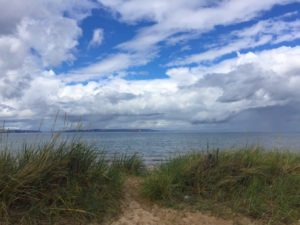
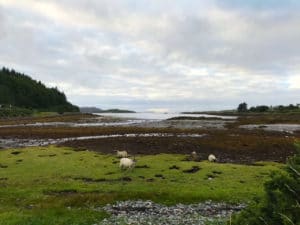
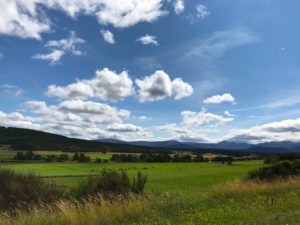
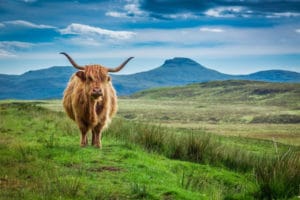
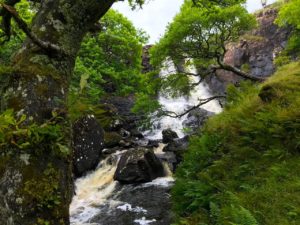
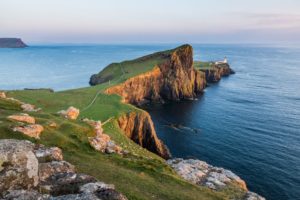
The land known as Scotland was united as the Kingdom of Alba under the house of Alpin in 840 CE. It later was united with England in 1707. In fact, Scotland makes up of one-third of the United Kingdom. Previously, the land was home to the Vikings and the Picts (a druid clan known for their stone mound houses and carved standing stones).
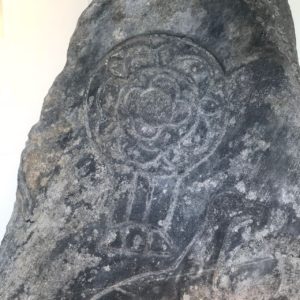
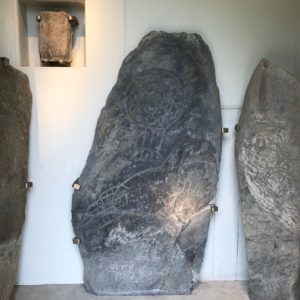
Another interesting thing about Scotland of recent note is that it is setting of the bestselling Outlander book series by Diana Gabaldon, now an award-winning Netflix series. The books follows Claire, a brave and headstrong Sassenach (Gaelic for English) who finds herself drawn to a mysterious stone circle in the Highlands and magically transported from 1945 to 18th century Scotland. Surrounded by battling ‘Red Coats’ she is rescued by Jamie, one of the Highlanders and a Jacobite, and finds herself thrown into their world and falling in love.
Scotland is divided between the Highlands & Islands and the Lowlands. Our trip was mostly the Highlands and the Inner Hebrides Islands. We started off in Edinburgh, where we stayed two nights. The city was teeming with people and the streets were buzzing, as it was just days before The Edinburgh Fringe Festival, and with the older, Edinburgh Festival. Both festivals run concurrently. Many performers were already in the streets and the city was alive with tourists and locals. By my account, there were no less than 10 street performers on our walk down from the Edinburgh Castle to The Palace. It is the number one fringe festival in the world.
It would be hard to come to Edinburgh and not to visit its Castle which dominates the City as its most characteristic monument. It’s powerful stonewalls have endured many sieges and its sumptuous apartments were an important resident of Scottish Kings and Queens, not to mention being at the heart of Scotland’s life for well over a thousand years. It is also home to Scotland’s Crown Jewels, three military museums, the National War Memorial, the Prisons of War Exhibitions and a dog cemetery. Over the centuries, the castle has witnessed royal ceremonies, savage battles, medieval parliaments, lavish feast, desperate sieges, ruthless politics, the birth of a King and the death of several Queens.
The One o’Clock Gun is fired from Mills Mount Battery in the Castle at precisely 1pm every day except for Sundays, Good Friday and Christmas Day. This Edinburgh tradition has been in place for 150 years and was to help keep proper time in the city and especially in the Port. The Castle is located at the top of a high hill with steep inclines and steps, one can take a cab to the top, but it is still a lot of steps inside, so be ready to climb.
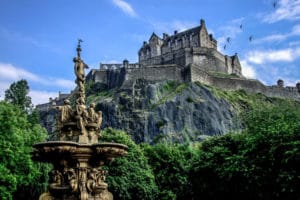
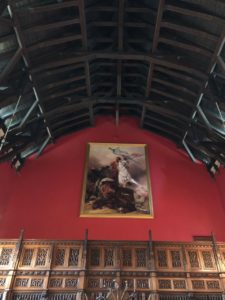
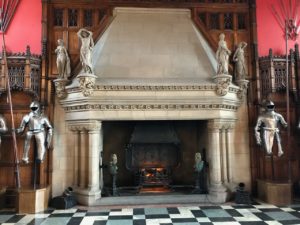
Another important castle is the Palace of Holyroodhouse, which stands in a spectacular setting at the foot of the Royal Mile in Edinburgh, with walled gardens surrounded by an open park with Arthur’s seat (a hill which you can climb and Edinburgh’s 2nd most important landmark), which is connected to the Scottish legends of King Arthur. The Palace of Holyroodhouse has been a royal residence for over 500 years (including that of Mary, Queen of Scots), and today is still the official Scottish residence of HRH Elizabeth, The Queen of Scotland. The Queen is in residence from time to time while carrying out a wide range of public engagements at both the Palace and in Edinburgh. The longest and largest room in the Palace is the Great Gallery, which is decorated with 96 of the 111 Jacob deWet portraits of the real and legendary Kings of Scotland from Fergus I to James VII.
The ruins of Holyrood Abbey lie beside the Palace. It suffered badly in the 16th and 17th century under the turmoil between the English and the Scots and later under its own weight, as the ceiling collapsed. It’s picturesque remains began attracting and inspiring artists including Felix Mendelssohn, who wrote his Scottish symphony in honour of the melancholy Abbey.
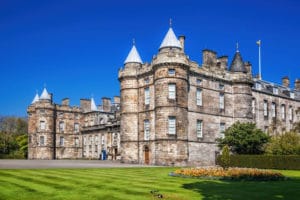
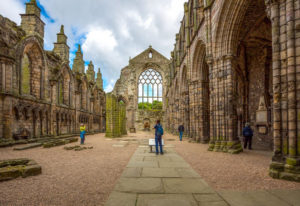
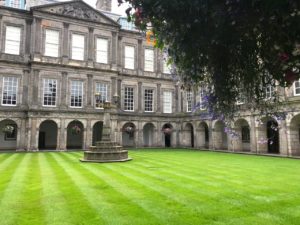
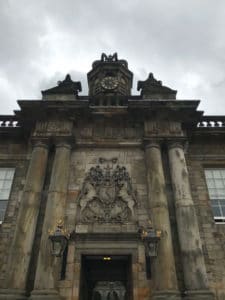
We also visited the peaceful, world-renowned and not-to-be-missed Royal Botanic Garden of Edinburgh, including The Queen Mother’s Memorial Garden and
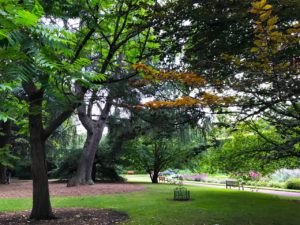
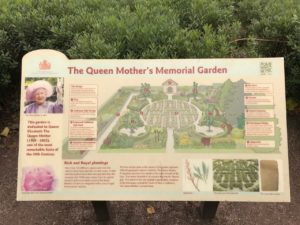
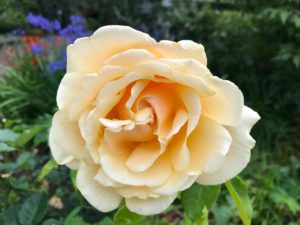
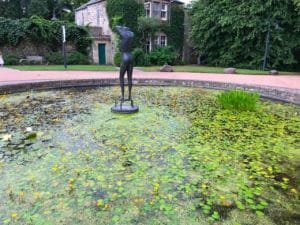
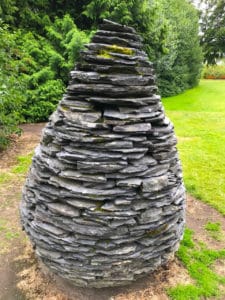
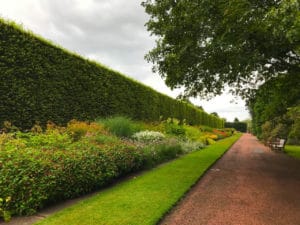
stepped aboard The Queen’s former floating palace and explored The Royal Yacht Britannia’s 5 decks and State Apartments, including seeing the on-board Rolls-Royce and The Queen’s bedroom.
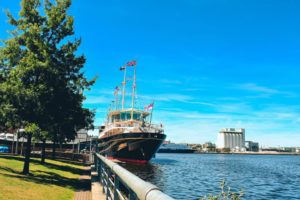
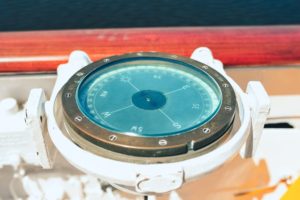
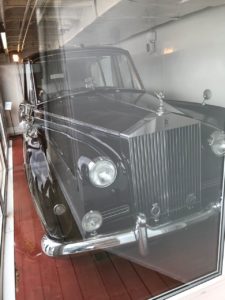
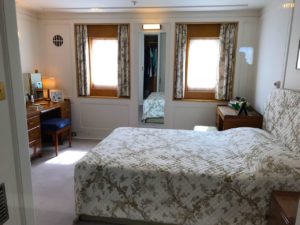
We even managed to visit with a friend and snag a reservation at a great restaurant, Fishers in the City on Thistle Street in the downtown. You can see my TripAdvisor review of Fishers online.
Armed with flapjacks, we left Edinburgh and started on our Scottish road trip. Our first pitstop town was Grantown on Spey, a cute town in the Speyside, land of stags, rivers and whiskies, where we stayed at Firhall Highland Bed and Breakfast hosted by James and Stuart. This Victorian home has undergone a complete loving transformation to offer uniquely designed, four-star rooms. With sophisticated décor and delicious breakfast offerings, this adult-only bed and breakfast has your comfort and relaxation in mind. James and Stuart are also two of the funniest and fabulous gents we have ever met and we loved staying with them. It was grand, including the breakfast in the morning.
Strathallan House Bed and Breakfast, located next door is run by Stuart’s equally charming & hilarious sister, Isla along with her husband Spencer. It is also a Victorian home completely renovated with style and charm, although she was there first! If you are feeling naughty you can pick from a full Scottish breakfast with locally sourced bacon, haggis and sausages from Grants of Speyside or the Blueberry pancakes with Canadian Maple Syrup. We were staying in Grantown on Spey for two days, so we had the pleasure of staying at both places. Which house has the best breakfast is yet to decided … last we left them, siblings Stuart and Isla were still battling for the trophy. Both or either houses are a must stay while visiting the area and next time we will stay longer.
Also in the Speyside is Ballindalloch Castle and Gardens, one of the few remaining castles owned continuously by the same family, the Macpherson-Grants. The castle was built in the mid-16th century resulting in the fairy-tale like exterior that still exists today. The rooms are elegant, the garden and grounds spectacular and the castle home to one of the largest collections of Spanish Paintings in Scotland. One of the Lairds (Gaelic for Lord) was obsessed with Spanish paintings in the 18th century, and that collection remains today. A walk in the beautiful gardens is worth the while, and you may chat with the Lady Laird without knowing it, which is what happened to us!
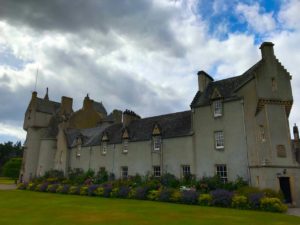
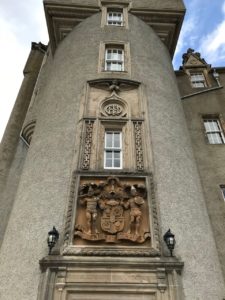
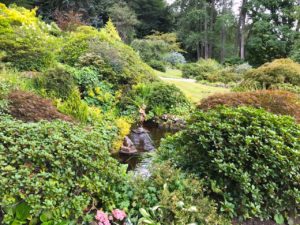
And of course, one of the most beautiful places along our journey was Balmoral Highlands Estate. It has been the Royal Family’s home in Scotland for more than 150 years. Much has changed since Queen Victoria purchased the lease to Balmoral in 1848. Her Majesty The Queen and her family are in residence from early August to mid-October and have skilfully transformed the Estate and its farms into a modern self-supporting business, while also allowing members of the public to visit the gardens and highlands surrounding the estate. And yes, note the flag flying in the tower, The Queen was in residence while we toured the grounds and ballroom, although she did not invite me in for tea.
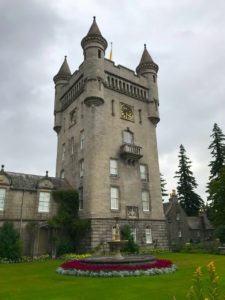
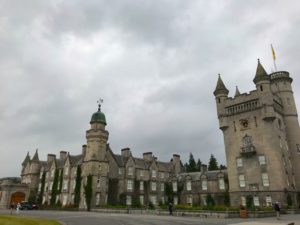
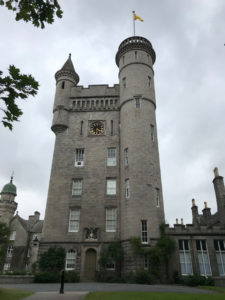
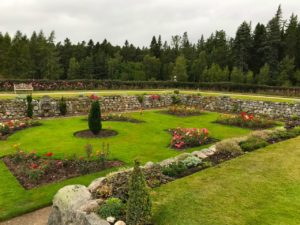
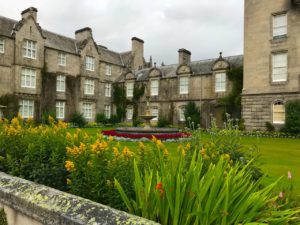
After visiting a Speyside whisky distillery (check out my blog on Scotch Whisky and how it is made at Glenfarclas Distillery) and after a gorgeous meal of fish and chips on the beach, we travelled along to Inverness, which means “mouth of the river ness” in Gaelic. It is a lovely small city, with lots of green areas including an island on the River Ness. Its other claim to fame is a Shakespearean connection. The Gaelic King MacBethad MacFindláich (MacBeth) whose 11th-century killing of King Duncan was immortalised in Shakespeare’s fictionalized play Macbeth, had a castle in this city.
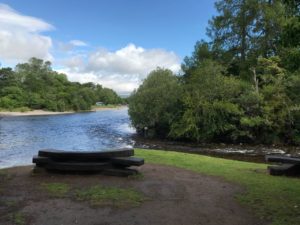
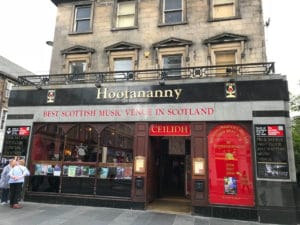
A moment which will stay imprinted in our memories forever was the visit to the site of The Battle of Culloden, located in Culloden Moor, just outside of Inverness. It is definitely one of the most important things to do in the Highlands as it was the location of the final defeats of the Jacobite Scots by the English Red Coats in the mid 18th century. You can visit this stunning museum and get a real sense of the build-up of the battle between the Red and the Highlanders. Our tour guide, Raymond Finlayson was phenomenal in taking us on a walking tour of the grounds and poetically describing the battle and its effects for generations to come. This visit really gave us an excellent historical perspective on the complex relationships of Scotland with the Union and mainly England, and explained quite well the history, way of life and society structure of the Scottish clans. Very educational, humbling and an emotional journey, but worth it all.
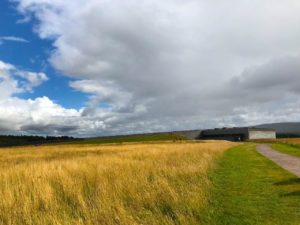
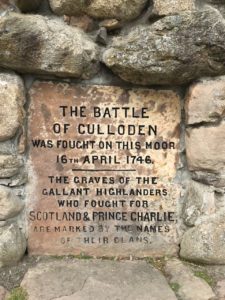
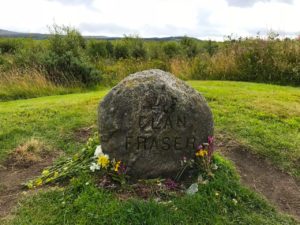
Of course, on one’s first visit to Scotland, you are drawn towards Loch Ness to discover whether Nessie was real or not, but before the loch, we stopped to see the Jacobite Steam train cross the 21-arched Glenfinnan Viaduct (made famous in the Harry Potter films) which overlooks Loch Shiel and a Jacobite monument. The train usually pauses on the viaduct allowing passengers and those watching from the hilltop view to snap a few photos. I snapped a few photos but mine were not fantastic. Directly across from this, on Loch Shiel you can see another backdrop that was also used in the Harry Potter films and is the location of Hogwarts School of Witchcraft and Wizardry. I was also able to find Dumbledore’s grave too, and promptly got a flat tire for it. We toughed it out, changed the flat and soldiered on …
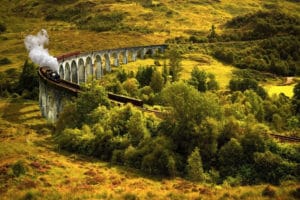
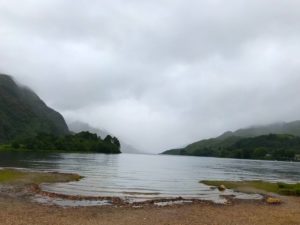
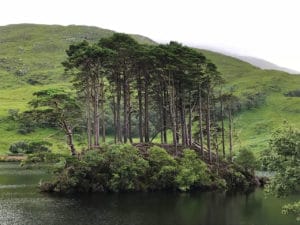
… and visited the Loch Ness Centre and Exhibition located in Drumnadrochit to discover the mystery of Nessie. In a very theatrical way, using lasers, digital projection and special effects, the Loch Ness centre charts the history of the monster by exploring Scotland’s geological past it’s folklore and the various research projects carried out on the Loch. In the end, it is not for me to say whether Nessie is real or not, but for you to discover on your own.
The gem of the majestic Loch Ness is Urquhart Castle which boasts over 1,000 years of drama and history, including its own demise at the hands of its owner. I even climbed the Grant Tower that watches over the iconic Loch Ness and peered into a miserable prison cell said to have held the legendary Gaelic bard Dòmhnall Donn. The castle has a distinctly Highland heritage and the site has witnessed some of the most dramatic chapters in the nation’s history. This is where St. Columba is said to have worked miracles in the 6th century, and where Macdonald’s Lords of the Isles struggles with the Crown for power.
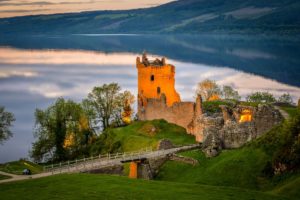
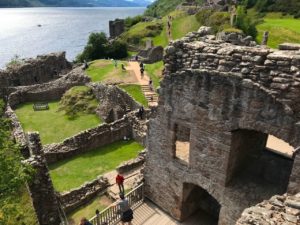
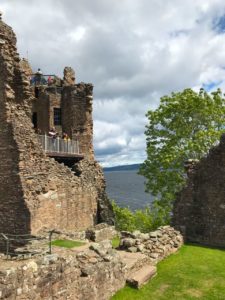
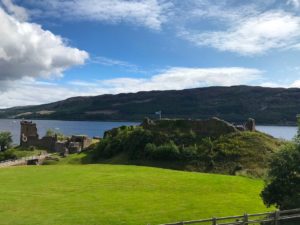
After winding down a magical road along the coast to Kilchoan, with gorgeous trees, waterfalls and rocks covered with moss, we took a ferry to Tobermory, a lively and colourful village where we had the most fun pub night on our trip. But what happens in the pub stays in the pub, so mum’s the word!
The roads on the Isle of Mull offer all the sceneries you have dreamed of when thinking of Scotland. Another isle where you can reflect, alone with the wild and beautiful coastal landscapes is the Isle of Ulva is situated off the west coast of the Isle of Mull, this idyllic island is a haven of tranquil woodlands and unspoiled scenery for walkers and wildlife enthusiasts. There are various walks, which range from one to six hours while keeping an eye out for sea eagles, golden eagles, otters, and red deer. Ulva is also home to The Boathouse, the only restaurant and business on the island, which specializes in fresh local seafood caught around the shores of the island. Before our three-hour hike, we relaxed and had the Fisherman’s catch and the Ulva Soriby Bay Oysters, along with a lovely Pino Grigio.
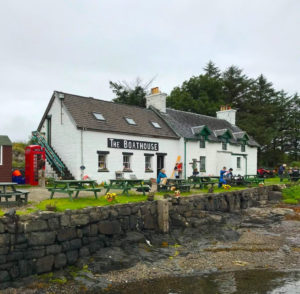
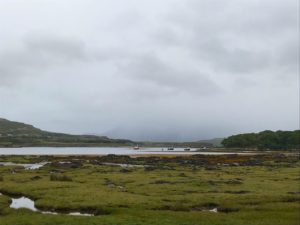
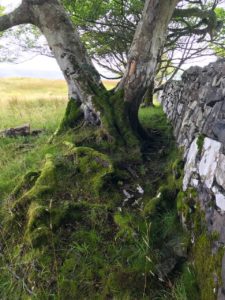
You can’t visit Scotland and not try to speak a few Gaelic words. Gaelic, pronounced gay lick (I’m being serious darlings), it is a Celtic language native to Scotland. You will hear Scottish Gaelic being spoken and see it on the signage, especially in the north. The language was outlawed for a long time but now the Government has been helping to bring it back. Young people are taught it in schools and the language is having a revival. Here are few simple expressions to keep in mind when travelling in Scotland:
Madainn mhath (pronounced madeeng vah) means good morning.
Feasgar math (pronounced fesker mah) means good evening
Is mise Leo (pronounced Is meesha Leo) means my name is Leo
Tapadh leat (pronounced tapah lat) means thank you.
Slàinte mhath (pronounced slac-tche vah) means cheers or good health, something you say when you make a toast.
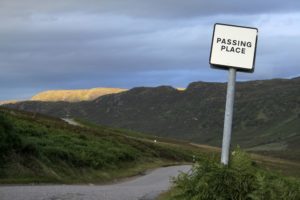
A few things to note while road tripping through Scotland, the vast majority of roads in Scotland are one lane with small passing area to allow to oncoming cars to pass. These passing points are roughly every 400 meters or so to let oncoming traffic get through. The car closest to a passing point should be the one to yield. That does not mean crossing the path of another vehicle into the passing point. If the passing place is on your side of the road you move over, if it is on their side you wait for them to approach you.
What we loved most about Scotland is the people. Their direct and uncomplicated approach to life is inspiring. One thing that struck us was that thing to know when you take your trip to Scotland, is there is no such thing as trespassing. Everyone has the right to roam along the countryside, including farms. The “freedom to roam” is the publics right to access public or privately owned land for recreation. This doesn’t include houses, gardens, or military bases, so don’t go squatting on someone’s porch, but it does allow people to enjoy the land and inland water for their own well-being. The only stipulation is that you must do so responsibly and safely.
As foodies, we obviously looked for the places to discover the local specialties. The food in Scotland was divine, most definitely a meat and/or seafood-lovers paradise. There are lots of pubs and restaurants, but in the high tourist season, reservations are a must especially in the smaller populated areas. Most restaurants close by 9pm in the rural areas especially. We were quite lucky to have great host help us with reservations. We enjoyed the Haggis, Neeps & Tatties, Scottish Salmon in a variety of ways, Sticky Toffee Pudding, Oysters, Mussels, Indian Curries and Leek’n’Tatty soup. Be sure to try the porridge (memories of my childhood delivering newspapers), followed by a full Scottish Breakfast, including black pudding, bacon, sausage, sautéd mushrooms. And of course the shortbread, flapjacks and a wee dram of Whisky (not for breakfast of course).
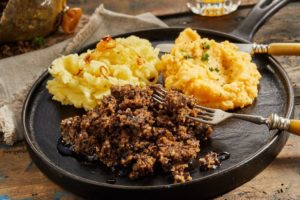
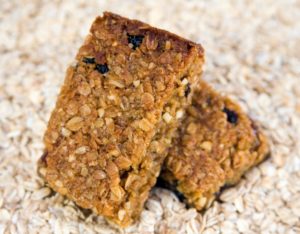
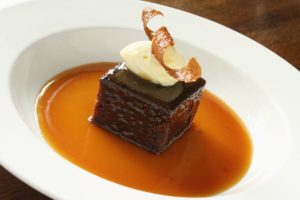
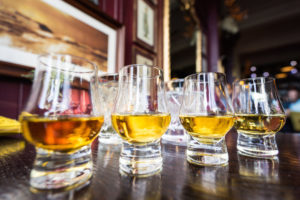
We had a wonderful and relaxing time in Scotland, it’s a charming and beautiful place. I can also tell you that we will be returning to Scotland soon again, there is just so much more to enjoy!
Oh, and did I mention I discovered the most wonderful Shortbread? Check out Chrystal’s Scottish Shortbread, made by hand. Tell them Leo sent you!
Vivre ma France et Slàinte mhath!

5 Comments
Receive the news in your emailbox
If you like this articles , you can subscribe to our weekly newsletter.

Spectacular write up Leo. Thank you! Absolutely confirms a trip to Scotland on my bucket list. Keep well!!
It is a fantastic place and I cannot recommend it enough, especially for beating summer heat! Best Leox
great post Leo!
Thanks David, your journey inspired me! Leox
Après le whisky les chateaux. Félicitations Leo pour ces excellents reportages qui m’ont rappelé notre voyage de 2016. Je constate que, hormis pour la visite d’une distillery, votre exploration a été très différente de la notre; j’en conclus que nous aurions intérêt à y retourner pour faire de nouvelles découvertes. Selon mon experience j’ajouterais volontiers une recommandation liées à la circulation automobile: attention on roule à gauche en Ecosse sauf sur ces fichues routes étroites où il n’y a plus ni gauche ni droite lorsqu’on croise un Scott (ou un Pict) roulant à fond de train.